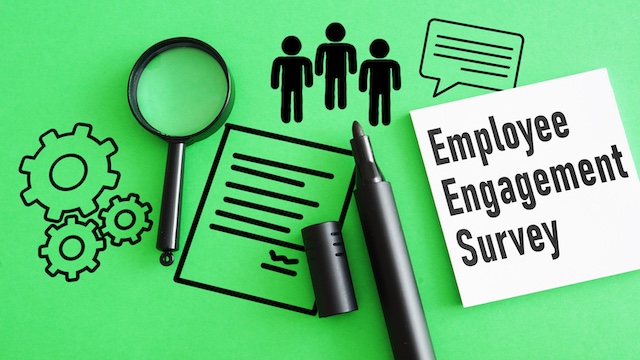Let’s address the stark reality: employee engagement in the U.S. is on a continuous decline, hitting its lowest point in over a decade.
A recent Gallup report found that the decline was particularly pronounced among remote, hybrid, and younger workers.
According to the report, only a third of U.S. workers (33 percent) could be classified as highly engaged, displaying a keen interest in their jobs and workplace environment.
However, engagement rates continued to drop further, declining three percentage points to 30 percent among full-time and part-time employees.
This decline translates to a staggering 4.8 million fewer employees who are truly engaged in their work, marking the lowest reported levels of engagement since 2013. The impact on organizations is significant, with productivity, morale, and retention all taking a hit.
What Is Employee Disengagement?
Employee disengagement often stems from workplace cultures, policies, and practices that fail to inspire and enable employees to be their best. A disengaged employee may not necessarily exhibit overt negative attitudes or toxicity, but rather a disconnection, apathy, and lack of motivation driven by factors within the employer’s control.
Some disengaged employees may do minimal work, withholding full effort, creativity, and discretionary contributions. Others may seem outwardly cooperative but are inwardly checked out and not invested in the roles or the organization’s success. While a few may openly complain about workload compensation or leadership, many more silently disengage.
The root causes frequently revolve around leadership failing to cultivate an engaging environment. This could include a lack of growth opportunities, excessive workloads, poor management, misalignment between employee values and company culture, inadequate recognition or rewards, or a disconnect between employees’ motivations and their day-to-day work activities.
The key difference is that while engaged employees have an emotional investment in their work, disengaged employees exhibit counterproductive attitudes and behaviors that can be detrimental to the organization.

How to Identify Disengaged Employees
Below are some signs of employee disengagement that employers should look for in the workplace.
Behavioral signs
- Productivity and quality of work decreases
- Increased absenteeism, tardiness, and frequent breaks occur
- Initiative and participation in meetings or projects is lacking
- Resists feedback or constructive criticism
Emotional signs
- Enthusiasm, energy, and passion for work decline
- Interaction and collaboration with colleagues reduce
- Frustration, irritability, and negative attitude increase
Communication signs
- Collaboration and contribution to team efforts is limited
- Silence and lack of sharing ideas or suggestions happen
By recognizing these telltale signs across different aspects of employee behavior, organizations can identify disengagement early on and proactively address the underlying issues before they escalate further.
6 Steps to Deal with Disengaged Employees
Dealing with disengaged employees can be challenging, but there are steps you can take toward a more motivated and committed workforce. Here is a process for handling disengagement in the workplace.
1. Identify the root cause of disengagement
Understanding the underlying cause of disengagement is vital to addressing the issue effectively. For instance, when employees lack proper resources or face a communication barrier, their disengagement is likely a symptom of these unresolved problems.
Say a graphic designer is struggling with meeting deadlines. After a discussion, you discover that the software was outdated, causing a delay. Upgrading the software will improve the performance and help him meet his deliverables on time.
2. Open the lines of communication
Establishing a safe, open environment for conversation is crucial to addressing disengagement. Regular one-on-one meetings can align expectations, team-building exercises can strengthen relationships, and providing opportunities to give feedback can help employees feel heard and valued.

For instance, a manager can introduce monthly “feedback sessions” where everyone can share their concerns freely. Such sessions can be a great way to address issues and boost team morale.
In addition, transparency can go a long way in keeping employees connected to the organization. When all team members are treated with respect and are apprised of important information about the company, they are more likely to feel invested in its outcomes.
3. Empower employees through training and recognition
Recognizing employees’ strengths and providing opportunities for professional development can foster a sense of value and motivation.
For instance, when an analyst demonstrates great potential, but seems slightly disengaged, offering another role with training and project management reignites commitment and motivation. Keeping team members challenged can also help them stay interested in their work.
4. Recognize achievements and hard work
Show appreciation for employees’ contributions through both verbal praise and tangible rewards. Recognition can uplift their spirits, reinforce positive behavior, and boost morale.
Simple acts of appreciation, such as a “thank you” post or creating an “employee of the month” award, help foster healthy competition and a sense of achievement among team members.
5. Foster a positive workplace culture
Creating a supportive, inclusive workplace culture can prevent disengagement and enhance employee well-being.
For example, a company might hold quarterly team-building events where employees from different departments collaborate on fun challenges that celebrate the diversity of backgrounds and perspectives within the organization. These events strengthen relationships across teams and create an uplifting atmosphere where employees feel valued, connected, and part of an engaging culture.
6. Monitor progress and adapt
Change doesn’t happen overnight. Frequently checking in with employees, seeking feedback, adjusting strategies as needed, and showing genuine interest in growth can lead to sustainable engagement.
Start Re-Engaging Your Employees Now
Remember, disengagement is not a permanent state. By taking proactive measures, organizations can reignite employee motivation, enthusiasm, and commitment.
One effective solution to re-engage employees is to invest in career development and coaching programs. INTOO offers a range of career development programming. Through personalized coaching, workshops, assessments, and training, INTOO empowers employees to embrace change, build confidence, and define success on their own terms.
Contact us today to learn how we can help.











